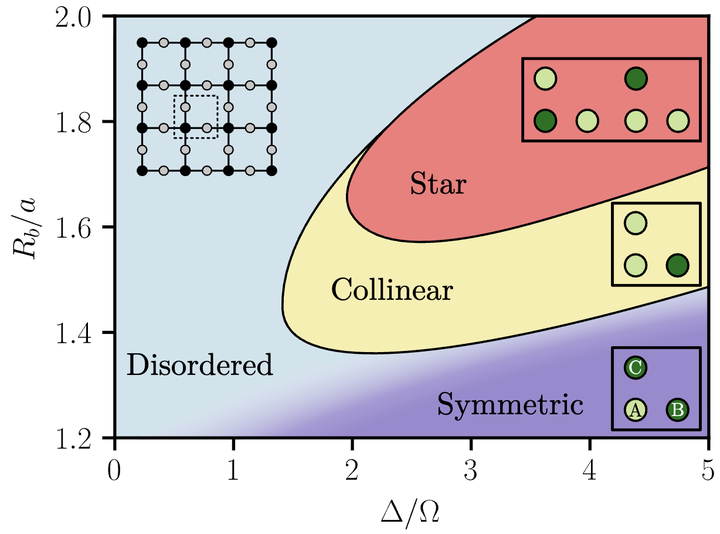 Numerical phase diagram of the Lieb lattice.
Numerical phase diagram of the Lieb lattice.
Abstract
Neutral-atom quantum simulators offer a promising approach to the exploration of strongly interacting many-body systems, with applications spanning condensed matter, statistical mechanics, and high-energy physics. Through a combination of quantum experiments, numerical calculations, and analytical methods, we demonstrate a rich set of phenomena accessible on such quantum simulators by studying an array of Rydberg atoms placed on the Lieb lattice. First, we map out the ground states and phase diagram of the system, identifying a range of density-wave-ordered phases, and find excellent agreement between theory and experiment. Allowing for local control of the detuning field thereafter, we discover a quantum analog of the classical liquid–vapor transition and probe its underlying hysteretic dynamics. Furthermore, we study out-of-equilibrium quantum quenches and observe anomalously slow relaxation dynamics arising from kinetic constraints. These results highlight how geometric control offered by neutral-atom simulators can extend the frontiers of programmable quantum matter, enabling access to complex phases, metastability, and thermalization dynamics in many-body quantum systems.